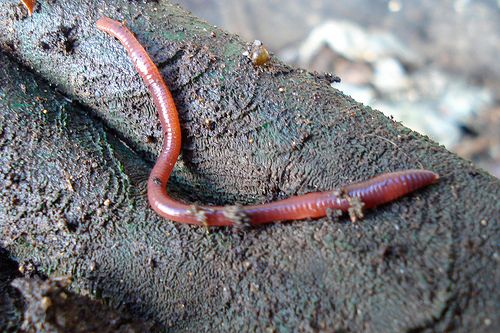Red Wiggler Express: Efficient and Top-Tier Worm Delivery Services
Open the Keys of Red Wigglers: Your Overview to Composting Success
The integration of red wigglers right into composting methods offers a substantial chance for improving soil wellness and advertising sustainability. Comprehending their needs and behaviors is critical for maximizing their capacity, from setting up an ideal worm container to feeding them the best materials.

What Are Red Wigglers?
(Lake Rhodhiss Bait)Red wigglers, medically referred to as Eisenia fetida, are a species of earthworm primarily made use of in composting as a result of their impressive capacity to disintegrate raw material effectively. These worms are defined by their reddish-brown pigmentation and a segmented body, normally determining between 3 to 4 inches in length. Unlike other earthworm types, red wigglers flourish in rich, organic environments, making them ideal for vermicomposting systems.
Belonging To The United States And copyright, they are usually discovered in decaying leaves and compost heap, where they play an important role in nutrient recycling. Their adaptation to staying in a damp, cardio atmosphere allows them to consume huge quantities of organic waste, breaking it down into nutrient-rich castings that boost soil wellness.
Red wigglers recreate swiftly, with a single worm capable of generating several cocoons each week, each having numerous hatchlings. Comprehending the biology and habits of red wigglers is important for maximizing their potential in composting applications.
Benefits of Making Use Of Red Wigglers
Using the power of red wigglers in composting offers various benefits that improve soil health and wellness and advertise lasting waste administration. These impressive microorganisms successfully damage down natural issue, changing cooking area scraps and backyard waste right into nutrient-rich vermicompost. This ended up item is incredibly advantageous for plant growth, as it enhances soil structure, raises moisture retention, and enhances nutrient availability.

(Red Wiggler Express)In addition, the visibility of red wigglers in your composting system can speed up the composting process, generating top notch compost in a fraction of the moment compared to conventional approaches. The spreadings created by these worms are also including valuable bacteria that even more enrich the dirt environment.
Establishing Your Worm Bin
Developing an effective worm bin is an uncomplicated process that can dramatically enhance your composting initiatives. Worm containers can be made from plastic storage containers, wood boxes, or commercially offered worm containers.
Next, prepare the bed linen product, which offers as the worms' habitat. A mix of shredded paper, cardboard, and coconut coir functions well, offering a comfy setting for the worms.

Feeding Your Red Wigglers
To make sure the health and wellness and performance of your red wigglers, it is necessary to provide them with a balanced diet regimen that meets their dietary demands. Red wigglers grow on a varied variety of organic materials, which not only provide essential nutrients yet likewise promote reliable composting.
Start by incorporating kitchen scraps such as veggie peels, fruit cores, and coffee premises. Prevent citrus fruits, onions, and garlic, as these can be damaging to worm wellness. In addition, present shredded paper, cardboard, and dry leaves to develop a well-aerated environment.
Feeding regularity must be checked; normally, worms can consume half their body weight in food weekly. It is crucial to prevent overfeeding, as excess food can lead to unpleasant smells and attract bugs. A good technique is to add food in percentages, enabling worms to refine it before presenting more.
Preserving dampness levels is likewise vital; the bed linen needs to be moist yet not soggy. Finally, make certain to frequently examine the temperature and pH degrees of the container to ensure an ideal setting for your red wigglers, eventually boosting their composting efficiency.
Harvesting and Making Use Of Garden Compost
An effective composting procedure with red wigglers finishes in the rich, dark compost known as vermicompost, which can substantially improve dirt health and wellness and plant development. Gathering this nutrient-dense material normally happens every three to six months, depending on the dimension of your system and the quantity of natural matter being processed.
To collect, delicately different the compost from the worms and any type of undecomposed materials. One effective method entails relocating the materials of the container away and including fresh bed linen and food to the vacant room, motivating the worms to migrate. After a few days, the compost can be collected from the contrary side.
It is necessary to use vermicompost correctly to optimize its advantages. It can be used as a leading dressing for garden beds, combined right into potting soil, or made into a nutrient-rich liquid plant food understood as "worm tea." This application method helps to supply crucial nutrients straight to plant roots, promoting healthier growth. By incorporating vermicompost right into your horticulture regimen, you not just reuse organic waste yet additionally produce a successful community that supports lasting horticulture practices.
Conclusion
In recap, red wigglers offer as phenomenal allies in composting initiatives, changing natural waste into nutrient-rich vermicompost (Red Wiggler Express). Their one-of-a-kind biological characteristics and effective waste processing capacities contribute considerably to lasting horticulture techniques. By comprehending the optimal problems for their environment, feeding needs, and compost harvesting strategies, garden enthusiasts can enhance dirt health and advertise plant vigor. Welcoming vermicomposting not only minimizes landfill waste however additionally fosters a much more environmentally liable approach to horticulture and resource administration.